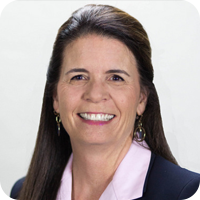
Seven thoughts about earthquake resilience and COVID-19
I remember March 19, 2020. It was a Thursday and seems like a year ago. It was week one, day three of my “stay-at-home” experience. I remember sitting on the couch watching Los Angeles Mayor Eric Garcetti deliver his evening “Safer-at-Home” address asking residents to stay home and limit all non-essential activities. Mayor Garcetti somberly said, “Today is a day that will be seared into the story and streets of this city. It will be a moment when everything changed.” I went to bed that night confused and stressed, wondering what the future held.
Instead of being confused and stressed, David Bonowitz, S.E., a leading structural engineer practicing in San Francisco and recipient of the 2020 Earthquake Engineering Research Institute (EERI) Distinguished Lecture Award, was enlightened and wrote an email with seven thoughts about earthquake resilience and the novel coronavirus (COVID-19). I read it first thing in the morning, and it provided me with some much-needed hope. Hope that lessons learned from this crisis could be used for good. Hope that lessons learned from this crisis could be applied toward achieving the goal of earthquake resilience.
The email from David is as applicable now as it was then, which tells me it will be applicable as we plan for the future. David has provided permission to share his email with the membership. I hope it will provide you with insight into lessons to be learned from this crisis.
From: David Bonowitz
Date: Thursday, March 19, 2020 at 10:49 PM
Subject: 7 thoughts about earthquake resilience and COVID-19
Colleagues,
In the spirit of my recent EERI lecture, but speaking only for myself, here are seven quick thoughts about earthquake resilience that we’re now confirming the hard way because of COVID-19.
Yeah, I know: Building damage is not contagious, and earthquakes don’t hit the whole country at once. But we can still take lessons here about prolonged shutdowns, how to reduce their impacts, and what it means to plan for the recovery of a whole community. Some lessons are mere reminders, but some reflect new expectations, some are even contradictory, and all are challenging in what they imply. So while I’m always open to new and contrary evidence, here are my thoughts so far.
- Community resilience is a collective action problem. We rarely get such a clear example of how one’s health (or recovery) is affected by another’s actions, indeed by the actions of any group with which we interact, even unwittingly.
- Community resilience requires mandates. Where collective action is needed, policies based on voluntary compliance are not enough. I love developers and officials who take expert advice and do what looks silly to their peers. But voluntary sacrifice only proves feasibility; to get a critical mass of resilience-based action, we need mandates. Thoughtful, fair mandates, reasonably enforced, but mandates just the same. Changing the building code (for earthquake design) or forcing the closure of assembly spaces (for pandemic management) makes compliance psychologically easier, and most people are relieved to have the decision made for them.
- Data is crucial for good policy-making. I mean the right kind of data, in the right hands, with denominators. A LOT more testing, especially for those without symptoms, would have been really helpful in early February. Similarly, we need to do building inventories in new ways if we want to answer new questions about downtime and community resilience. Also interesting: there are important practical differences between “surveillance testing,” which is analogous to a building inventory, and “diagnostic testing,” which is more like an engineering evaluation.
- The goal is to manage capacity and demand. Turns out pandemic management is mostly about limiting demands on existing healthcare systems — what we’ve now learned to call “flattening the curve.” Earthquake resilience, similarly, is about limiting and distributing the downtime so an emergency doesn’t tip into catastrophe. Not every building has to recover right away. The purpose of mitigation is simply to make your response and recovery plan feasible.
- Fast money is important. Not just to repair physical damage, but to ease the loss of a job, a business, or an investment. Insurance and assistance shouldn’t take so long or come with so many conditions that it actually delays recovery. Parametric products like Jumpstart (disclosure: I’m a customer), which disburse automatically, can fill a recovery gap.
- Normal is essential. The Bay Area “shelter in place” order, in addition to recognizing housing as essential, had to decide what counts as an “essential business.” Gas stations, hardware stores, laundromats, certain legal and accounting services, post offices, and every facility along the food supply chain down to the donut shop in the ground floor of my building all made the list. (The nail salon did not.) So if you’re designing a new building with a retail space but you don’t know who the tenant will be, how can you not assume it will someday be essential? Pandemics and earthquakes are different, life without disasters has disruptions too, and I’m not saying San Francisco (and as of tonight, California) got it exactly right, but it shouldn’t surprise us if “return to normalcy” requires a lot of normal stuff, and probably sooner than we thought.
- Let leaders lead. In other words, don’t wait for the Feds. Maybe that ‘s enough said about that, especially in terms of public messaging and response. But I submit that if we don’t want to find ourselves waiting for help, we need to be thinking and acting as states and cities now, and that means innovating to address all 6 of the topics above. Building stocks, healthcare systems, financial resources, and community expectations all vary significantly by place. So should our plans, policies, and programs.
A final thought: Whatever goals we set and lines we draw, we will be wrong. That’s ok. Success in this new field does not require that we hit the bullseye, only that we aim at the right target.
Looking forward to discussing all this and more (in person asap) as we continue our work (from home),
David
P.S. Bonus thought: Awkward terms like “functional recovery” are fine, as long as experts are consistent and persistent about what they mean (Dennis Mileti, ftw). I mean, whoever heard of “social distancing” until two weeks ago?
Join the Twitter #CODEversation at noon PT on Tuesday, May 12, 2002. This year’s Building Safety Month Twitter chat will cover seismic functional recovery and resilience. Ryan Colker and Susan Dowty will serve as co-hosts for the event.







